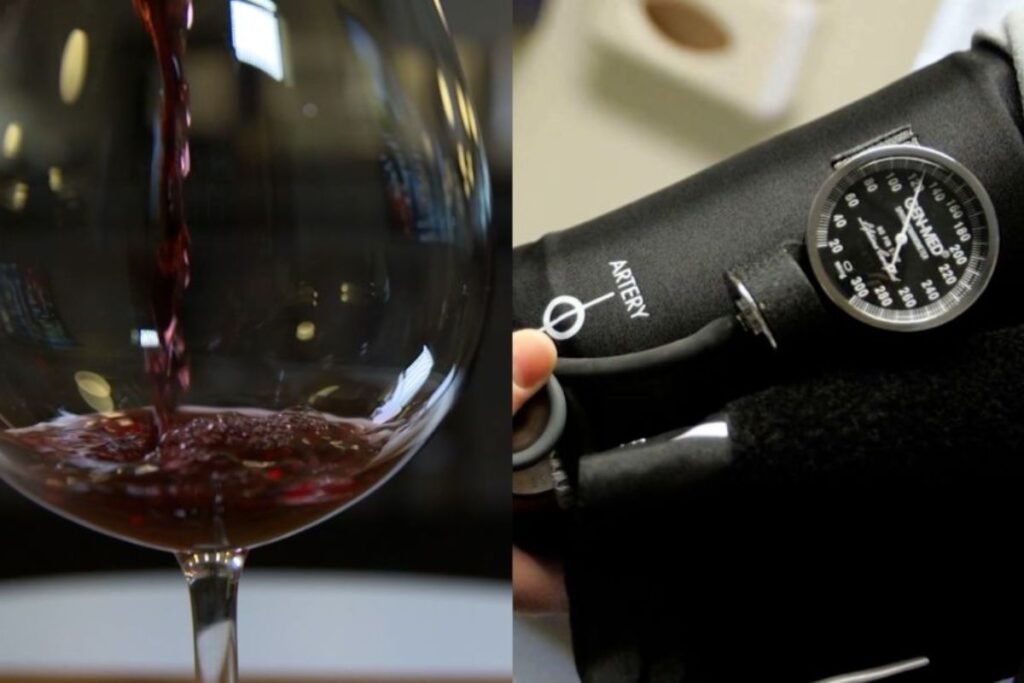The American Heart Association (AHA) and the American College of Cardiology (ACC) have released their first updated new blood pressure guidelines since 2017, calling for stricter attention to alcohol and sodium intake as key steps in lowering hypertension risk. The recommendations, published August 14, highlight earlier intervention for stage 1 hypertension and greater emphasis on lifestyle changes.
Alcohol Intake Linked to Higher Hypertension Risk
The new blood pressure guidelines advise Americans to limit or eliminate alcohol to improve blood pressure control. While the organizations note that abstaining entirely is most beneficial, they recommend men consume no more than two drinks daily and women no more than one.
Research cited in the guidelines shows a direct link between alcohol consumption and increased blood pressure over time. Those who avoid alcohol altogether have the lowest risk of developing hypertension, while individuals who reduce their intake by at least 50% often see measurable improvements in blood pressure levels.
“For years, we have known alcohol plays a role in cardiovascular health,” said Dr. Daniel Jones, chair of the guideline writing committee. “By addressing individual risks earlier and offering more tailored strategies, the 2025 guideline aims to help more people manage their blood pressure and reduce the toll of heart disease, kidney disease, Type 2 diabetes, and dementia.”
Sodium Reduction Remains a Priority
Alongside alcohol restrictions, the updated guidance reinforces long-standing advice to lower sodium consumption. Experts recommend limiting sodium intake to no more than 2,300 milligrams per day, with an ideal target of 1,500 mg.
Most sodium in the average American diet comes not from table salt, but from packaged and restaurant foods. The new blood pressure guidelines encourage consumers to check nutrition labels, select lower-sodium options, and use potassium-enriched salt substitutes when possible.
A heart-healthy diet, such as the DASH (Dietary Approaches to Stop Hypertension) eating plan, is strongly recommended. This diet emphasizes vegetables, fruits, whole grains, legumes, nuts, seeds, and low-fat or nonfat dairy products, while including lean proteins and non-tropical oils. Regular exercise, at least 75 to 150 minutes per week of cardio and strength training, is also advised.
Earlier Treatment for Stage 1 Hypertension
The most notable change from 2017 guidelines is a shift in treatment recommendations for stage 1 hypertension, defined as systolic blood pressure between 130 and 139 mm Hg or diastolic between 80 and 89 mm Hg. Previously, lifestyle changes and medication were generally reserved for stage 2 hypertension, beginning at 140/90 mm Hg. Now, clinicians are encouraged to intervene sooner with lifestyle adjustments and, in some cases, medical therapy.
Nearly half of U.S. adults, 46.7%, have blood pressure readings that fall into stage 1 or stage 2 hypertension categories. Despite available treatment options, heart disease remains the leading cause of death in the United States and worldwide.
Factors Influencing Blood Pressure
The new report highlights a range of influences on blood pressure beyond diet and alcohol. These include:
- Genetic, hormonal, and behavioral factors
- Diet quality and intake of fiber, calcium, magnesium, and plant protein
- Weight, age, and insulin resistance
- Sleep disturbances and stress
- Physical activity and overall fitness
- Environmental exposures, including air pollution and heavy metals
By addressing these risk factors holistically, the American Heart Association (AHA) and American College of Cardiology (ACA) hope to reduce the long-term burden of hypertension-related conditions. Bottom line: The updated new blood pressure guidelines make clear that reducing alcohol and sodium intake, adopting healthier diets, and intervening earlier in cases of elevated blood pressure could save millions of lives over time.









